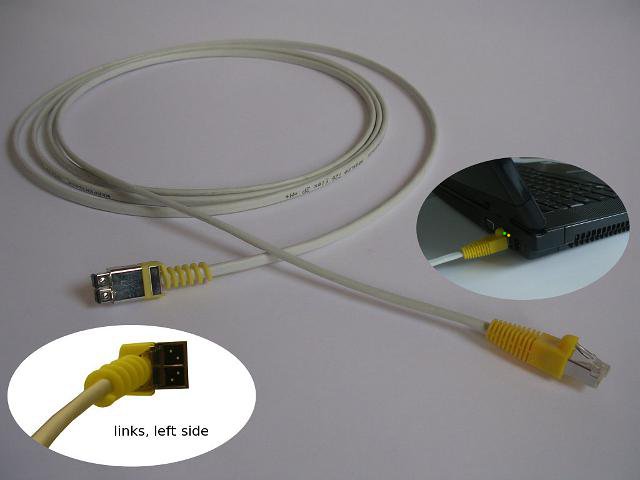- To utilize the Internet via the dormitory network, an authentication of the user at the beginning of the session is necessary. For this, you need your login and password (password for "dialin" permission) at Bielefeld University, University of Applied Sciences Bielefeld, the Oberstufenkolleg, or your personal user certificate of the Technische Hochschule OWL.
Authentication is based on the 802.1x protocol. Only after successful authentication to the RADIUS server, your computer gets a valid IPv4 address from DHCP server and further access to the network. IPv6 is not supported currently, so this should be disabled in your computer settings in case of problems.
- In context of the 802.1x authentication please always utilize username and password of your user account at the University of Bielefeld, University of Applied Sciences Bielefeld or the Oberstufenkolleg or your personal user certificate of the Hochschule OWL. If you have forgotten your password, please therefore contact the Hochschulrechenzentrum of the University, the Datenverarbeitungszentrale of the Bielefeld University of applied sciences or the EDP officer at the sixth form College.
- For 802.1x authentication, EAP-PEAP with MSCHAPv2 (username and password, Bielefeld University of Applied Sciences, Bielefeld University of Applied Sciences, Upper Secondary School) and EAP-TLS (User Certificate, Ostwestfalen-Lippe Technical University) are used. If necessary, you must also include the root certificate of Deutsche Telekom AG. Current versions of Windows, MacOS and many Linux distributions usually already include this certificate. Otherwise, you'll need to add it to your operating system first.
T-TeleSec Global Root Class 2 root certificate .br /> Authentication requires the T-TeleSec Global Root Class 2 root certificate. Current distributions bring the certificate from the house. Just take a look around your operating system. If the certificate is not yet available at your operation system, download this certificate here at https://www.pki.dfn.de/wurzelzertifikate/globalroot2. Depending on the operating system, you need the PEM certificate in ASCII-encoded form (*.pem) or as a binary file (*.crt). On various systems, you can then examine the authenticity of the certificate that you just downloaded using the checksum specified in the same way. Calculate the checksum of the downloaded certificate as follows:
# openssl x509 -noout -sha1 -fingerprint -in T-TeleSec_GlobalRoot_Class_2.pem
The result should match the following fingerprint, also mentioned on the DFN page:
SHA256 Fingerprint=91:E2:F5:78:8D:58:10:EB:A7:BA:58:73:7D:E1:54:8A:8E:CA:CD:01:45:98:BC:0B:14:3E:04:1B:17:05:25:52
- As part of 802.1x authentication, always use your user name and password to your user account at Bielefeld University, Bielefeld University of Applied Sciences or the Upper Secondary School or Your personal user certificate from the Technical University of OWL. If you have forgotten your password, please contact the university data center of the university, the data processing center of bielefeld University of Applied Sciences or the IT representatives at the upper secondary school. If you have any questions about your user certification, please contact the S(kim).
- Please make sure that the special network cable is plugged into the network socket in correct order (left side, upside). This does not concern the dormitories Werther Straße 148, Jakob-Kaiser-Straße 14, 14a, 14b, Stennerstraße, Storchsbrede.

- Please take care for the network cable. If the cable is broken, please contact the caretaker of your dormitory.
Related links:
![]() Software to protect against computer viruses for members of the university.
Software to protect against computer viruses for members of the university.
![]() Software to protect against computer viruses for members of the university of applied sciences.
Software to protect against computer viruses for members of the university of applied sciences.
![]() http://en.wikipedia.org/wiki/Extensible_Authentication_Protocol
http://en.wikipedia.org/wiki/Extensible_Authentication_Protocol
![]() http://en.wikipedia.org/wiki/Protected_Extensible_Authentication_Protocol
http://en.wikipedia.org/wiki/Protected_Extensible_Authentication_Protocol

 Home
Home 
